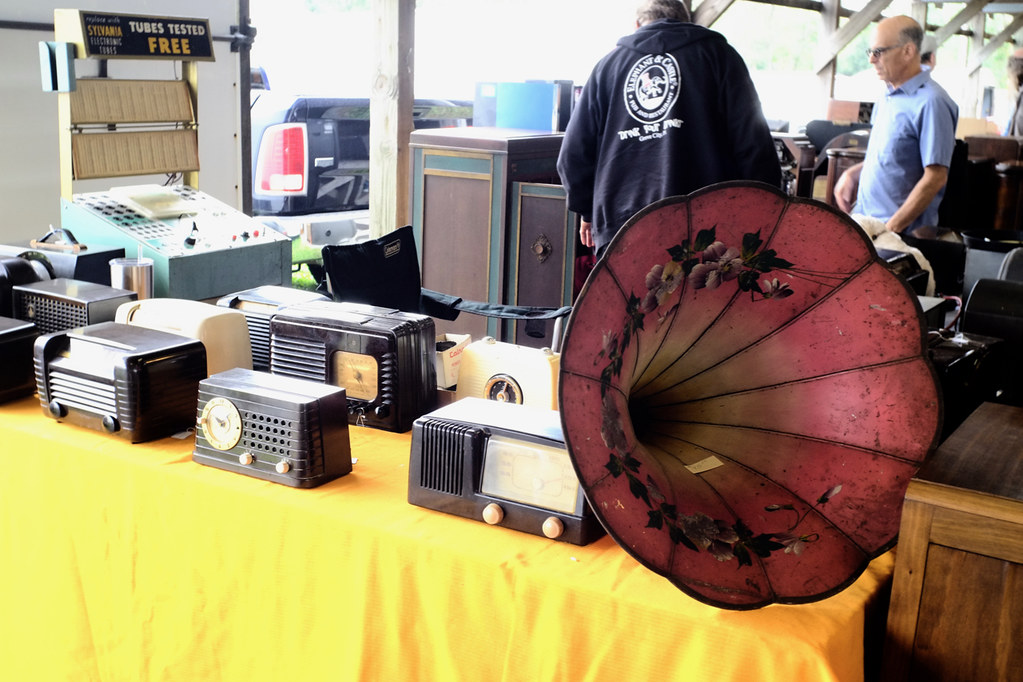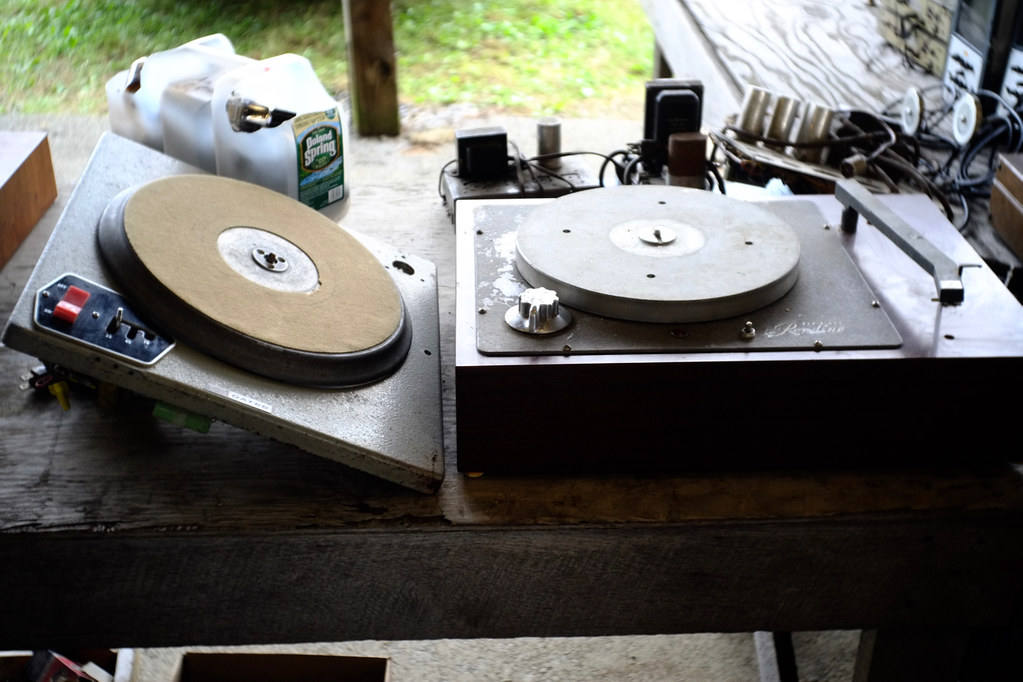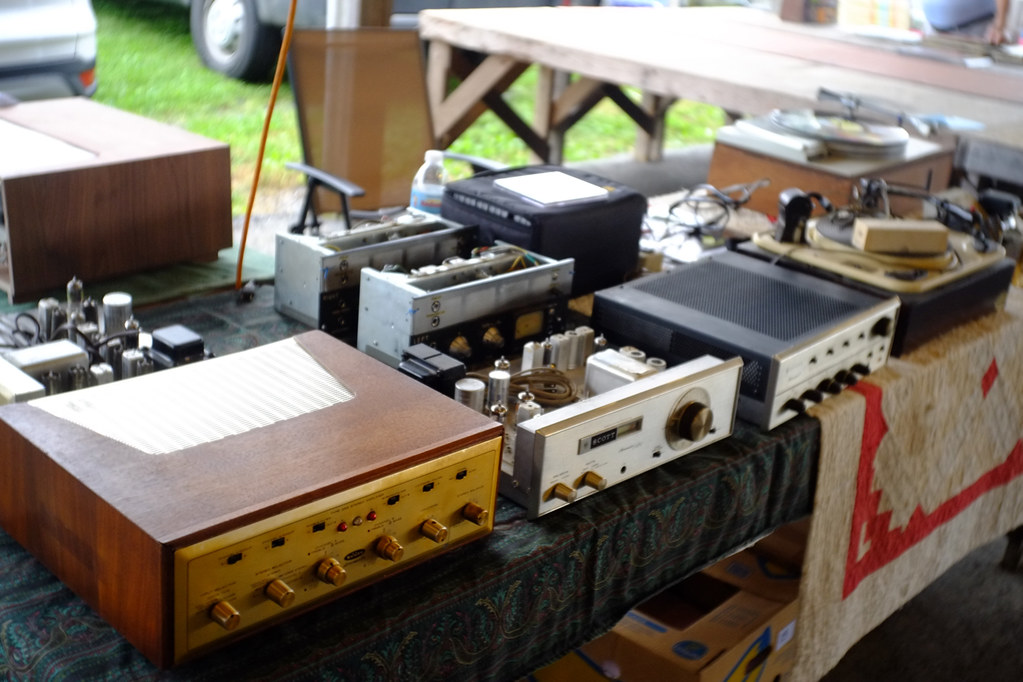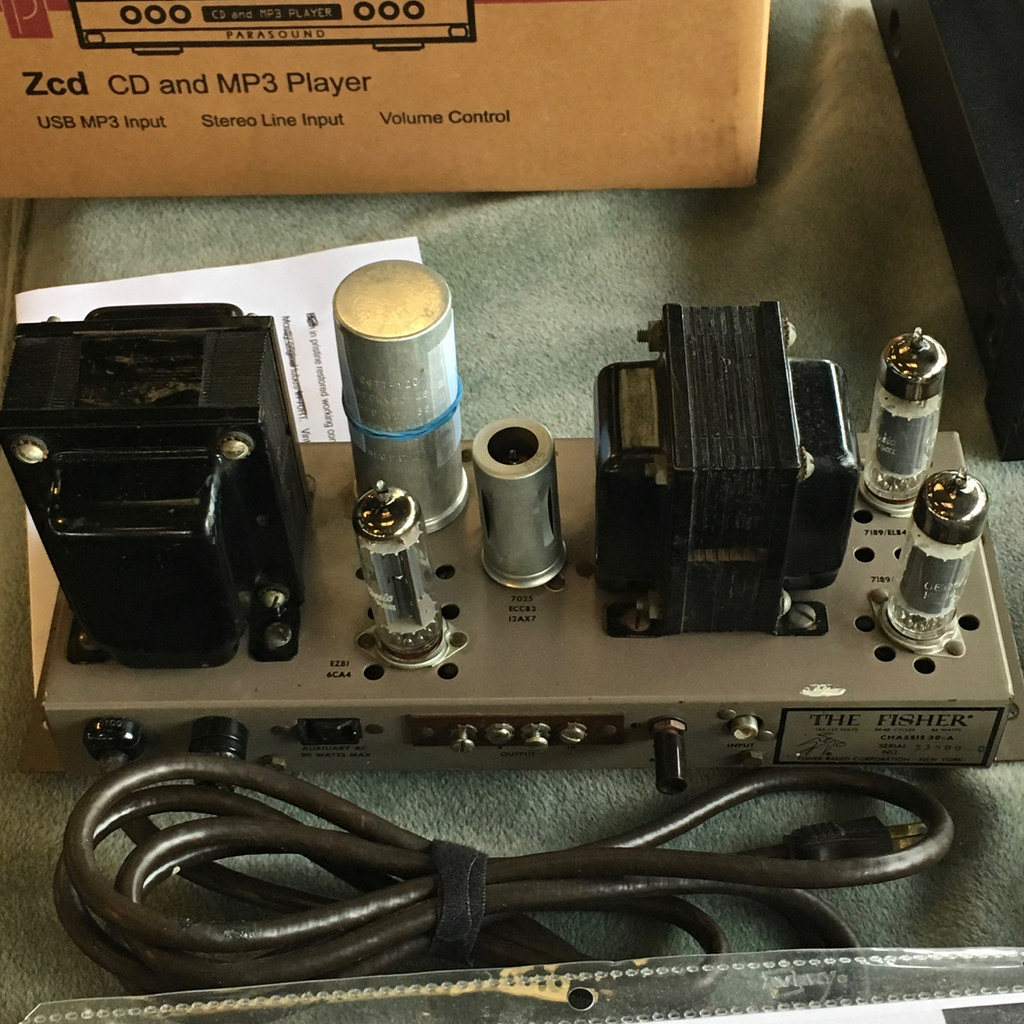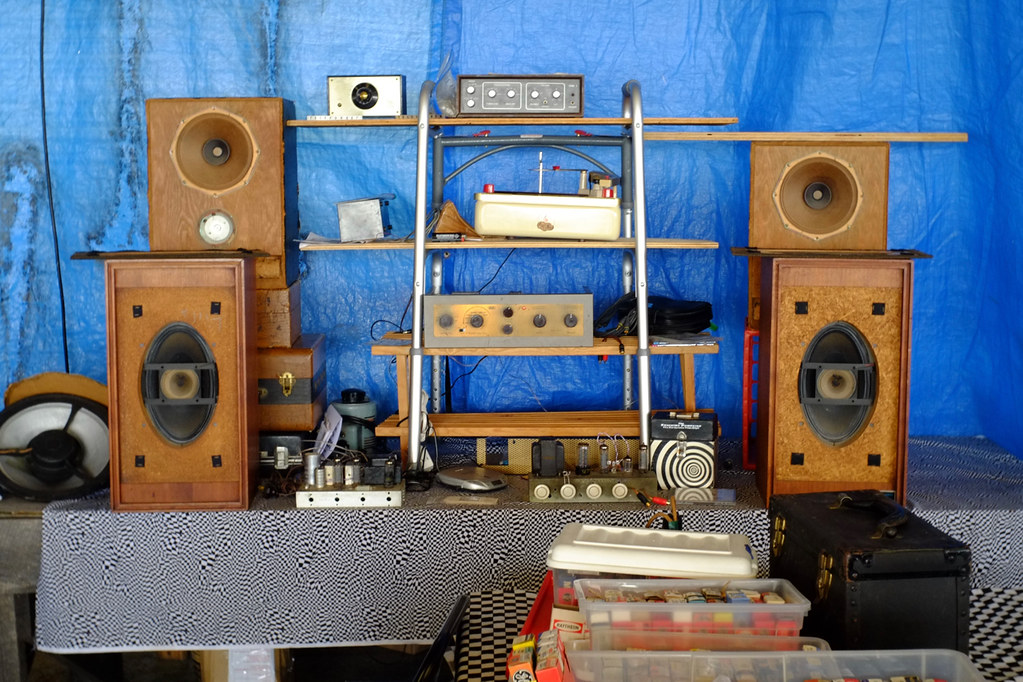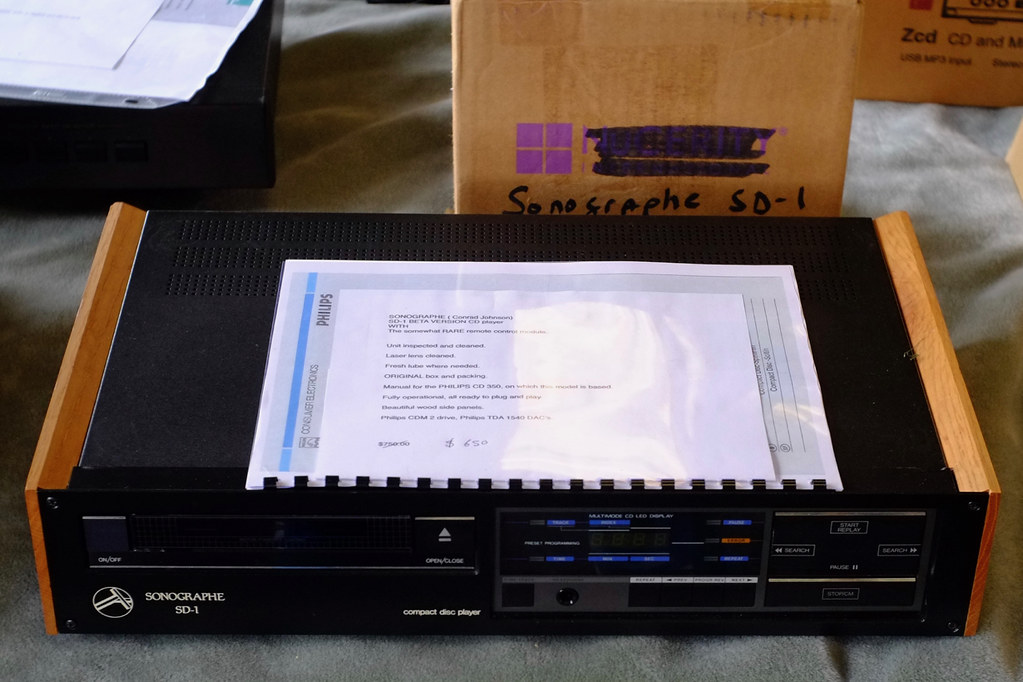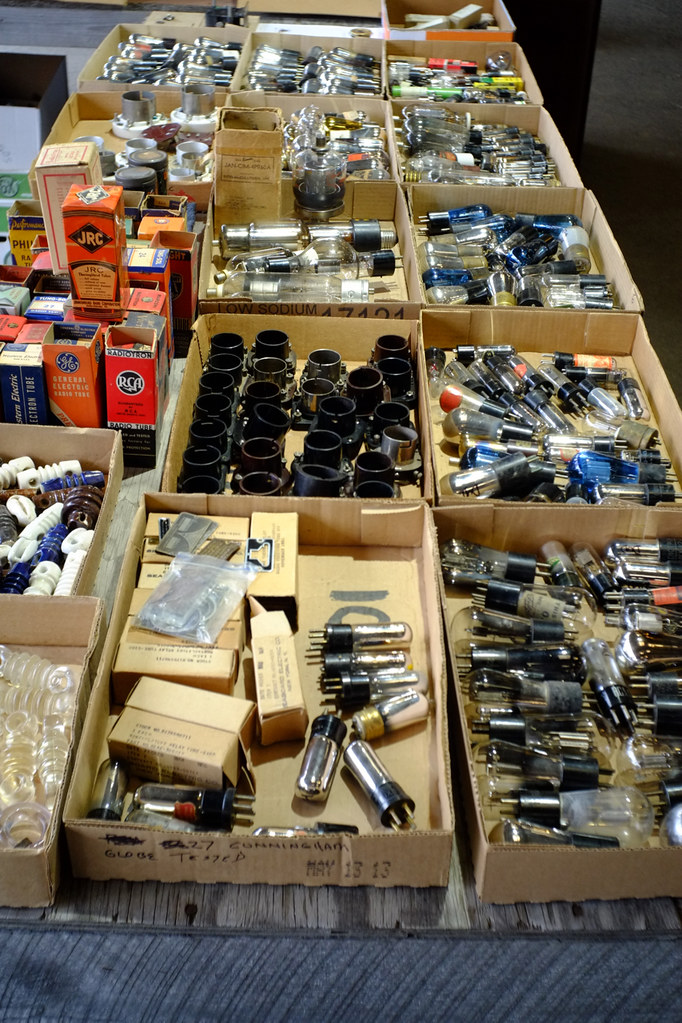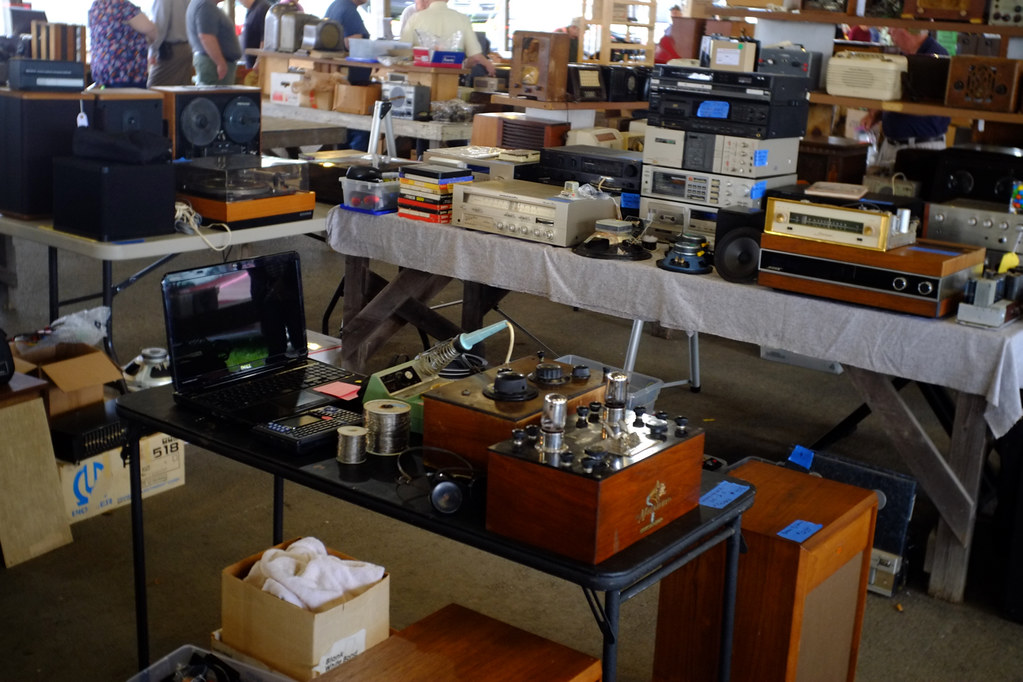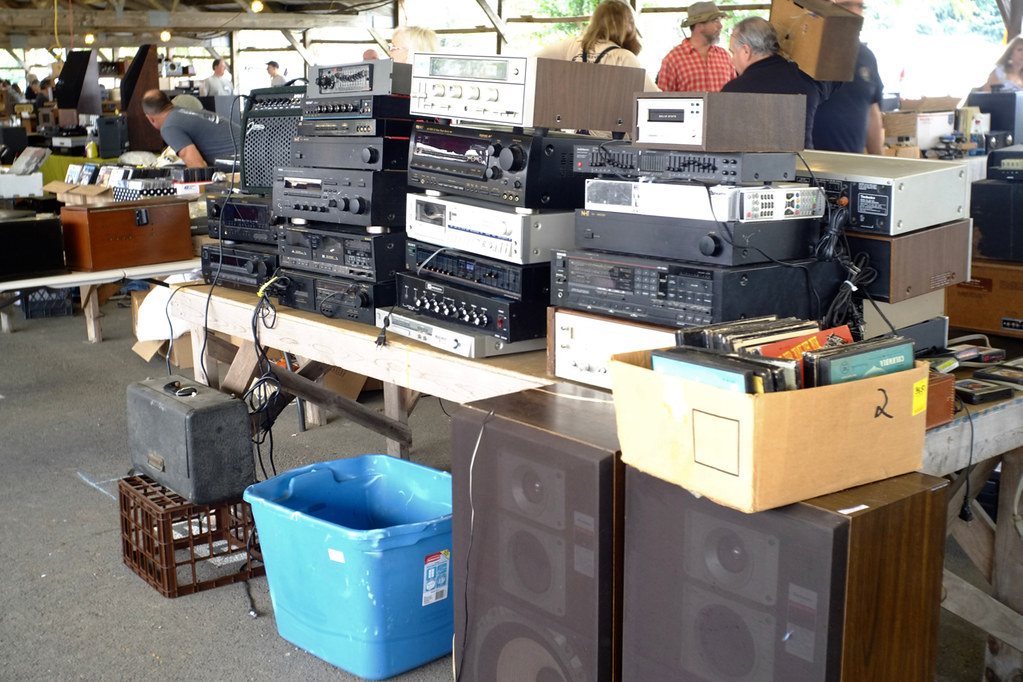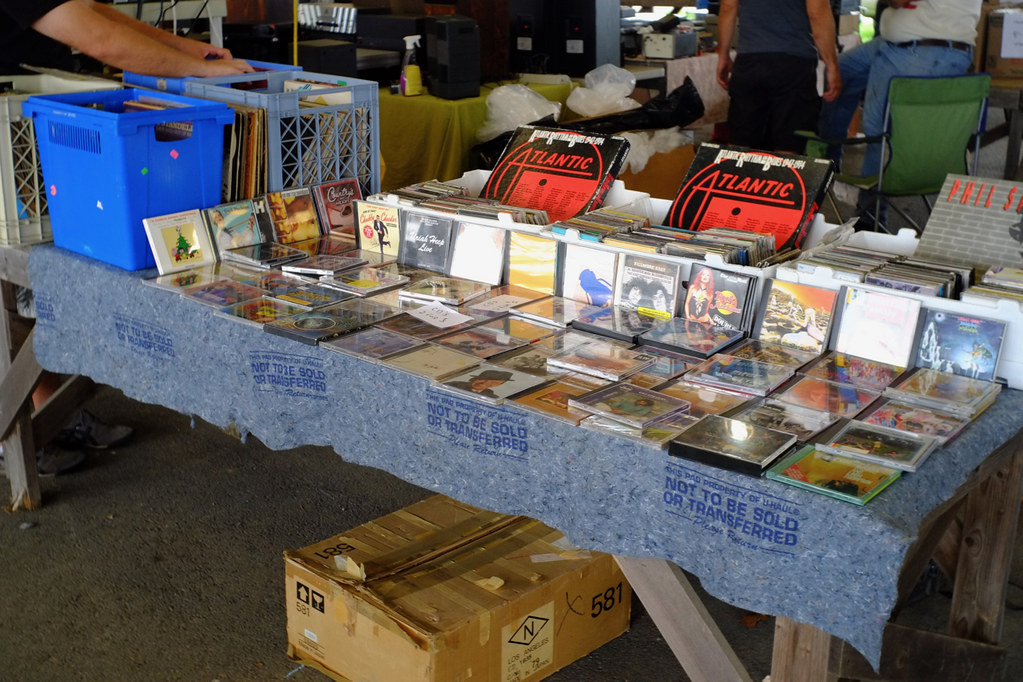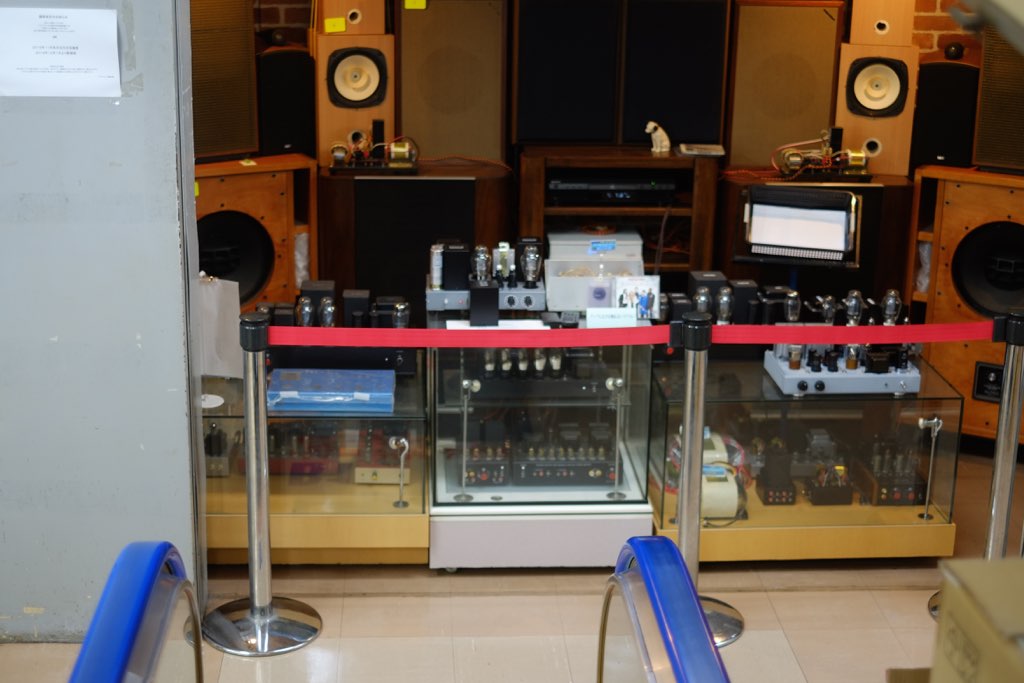All pictures were taken with a Fuji X-E1 camera + Canon 28mm f3.5 LTM lens.
I wasn't able to attend as many hamfests/radio shows this past summer. So I made sure I went to Kutztown.
This speaker caught my attention as something I've encountered in a vintage magazine in the past. Since there was no one manning the booth, I went on...
A pair of University Lowboys + an EV Aristocrat
A pair of University Lowboys + an EV Aristocrat
Nice Gates CB77, but I couldn't afford it 😞
Belt-driven Rek-O-Kut
Scott 299, LT110B FM tuner, Fisher KX100, etc.
Fisher PP EL84 mono block
My bud Larry always has a live demo set-up.
Sonographe SD-1: mid-80s Philips 14-bit oversampling chassis with twin TDA1540 DACs, audio section tweaked by conrad-johnson, nice piece but check out that asking price 😲
Tubes galore!
I scored a TDA1543 equipped Magnavox CD player from this booth.
Lots of 70s-80s Hi-Fi equipment
Used CD prices are at an all-time low 😃
The speaker I spotted earlier kept haunting me. I just had to give it a new home. My gut feel was right - it's a Stewart Hegeman-designed omni-directional speaker. 😎
